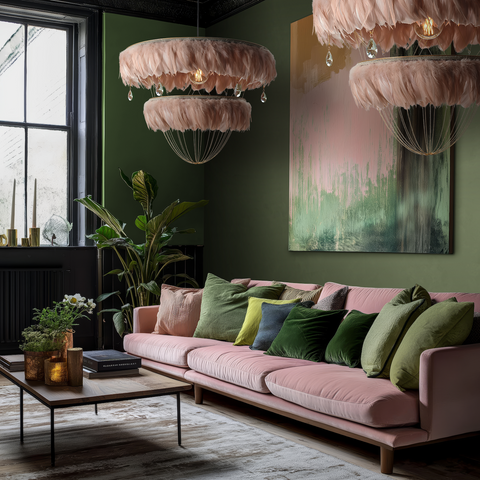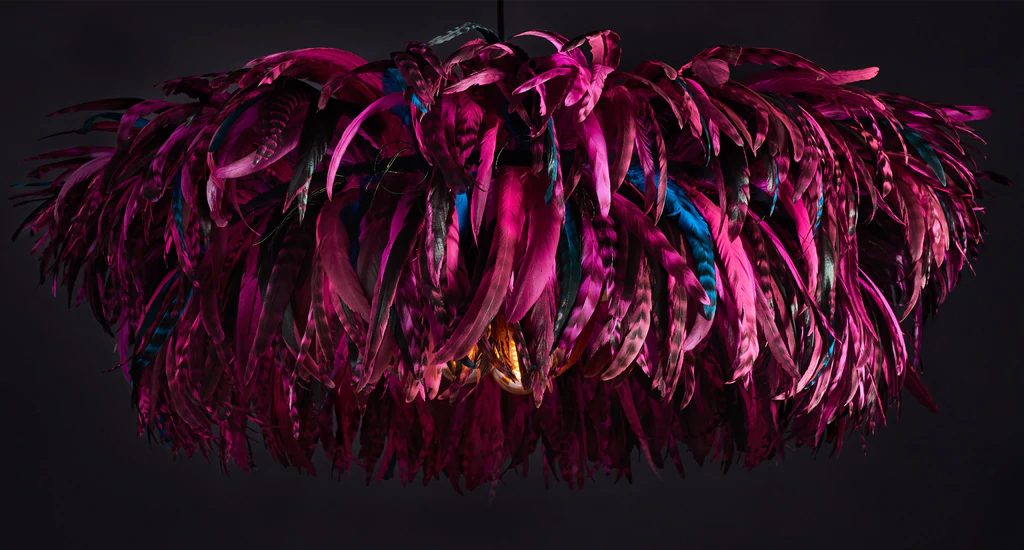
What is Dopamine Interior Design
In the realm of interior design, a new trend is emerging. That trend is Dopamine Interior Design.
This innovative approach intertwines psychology and design. It aims to create spaces that stimulate happiness and well-being. Dopamine, or the 'feel-good' neurotransmitter, plays a crucial role in our sense of pleasure and reward. Dopamine Interior Design taps into this, using design elements to trigger dopamine release.
The result? Spaces that not only look stunning but also make us feel good.
In this article, we delve into the fascinating world of Dopamine Interior Design. We'll explore its principles, its benefits, and how you can implement it in your own spaces. Whether you're a design professional or looking to enhance your living environment, this guide will provide valuable insights. Let's embark on this journey to create positive spaces that truly resonate with us.

The Science of Happiness in Design
The concept of Dopamine Interior Design is rooted in neuroscience. It's about understanding how our brains respond to different stimuli. Design elements like colour, texture, and light can influence our mood. They can trigger the release of dopamine, a neurotransmitter associated with pleasure and reward.
This is where the science of happiness meets design. By understanding how our brains work, we can create spaces that make us feel good. This is not just about aesthetics. It's about creating environments that promote psychological well-being.
Understanding Dopamine
Dopamine is often referred to as the 'feel-good' neurotransmitter. It plays a crucial role in our sense of pleasure and reward. When our brains experience dopamine, we experience feelings of happiness and satisfaction. This is the principle that Dopamine Interior Design taps into.
Learn more about Dopamine here.
The Psychological Impact of Interior Design
Interior design is not just about creating beautiful spaces. It's also about how these spaces make us feel. Research shows that our environment can significantly impact our mood and well-being. This is where Dopamine Interior Design comes in.
By using design elements that stimulate dopamine release, we can create spaces that promote happiness and well-being.

Principles of Dopamine Interior Design
Dopamine Interior Design is about creating spaces that stimulate the senses. It's about using design elements that evoke positive emotions.
Colour, texture, and light are key components of this design approach. Using these elements strategically creates an environment that goes beyond visually pleasing. It's creating a space that feels good to be in.
This involves a careful balance between aesthetics and functionality. The space must be visually appealing, but it must also be comfortable and practical.
Colour and Emotional Response
Colour plays a crucial role in Dopamine Interior Design. Different colours can evoke different emotional responses. For example, warm colours like red and orange can stimulate and energise, while cool colours like blue and green can soothe and calm.
The key is to use colour strategically to create the desired emotional response. Combining colour with texture is achievable through furniture, use our feather gallery for inspiration.
Textures and Materials That Speak to the Senses
Texture and material are also important in Dopamine Interior Design. They can add depth and interest to a space, stimulating the senses and promoting dopamine release. For example, soft fabrics and plush textures can create a sense of comfort and cosiness. On the other hand, sleek and smooth surfaces can create a sense of elegance and sophistication.
View our range of feather lampshades that offer texture, colour and light to a space.
Lighting: The Mood Enhancer
Lighting is another key component of Dopamine Interior Design. It can significantly impact the mood of a space. For example, warm lighting can create a cosy and inviting atmosphere. While cool lighting can create a more energising and stimulating environment.
View this guide to utilise light within your interior.
Creating Positive Spaces with Dopamine Decor
Dopamine decor is about creating positive spaces. How do we link these elements to create a space that promotes happiness and well-being?
The Role of Personalization
Personalization is a key aspect of dopamine decor. Having a space that reflects the individual's personality and preferences improves the sense of belonging. This can involve incorporating personal hobbies and interests into the design, or using favourite colours and patterns.
Incorporating Nature and Biophilic Elements
Nature plays a significant role in dopamine decor. Incorporating natural elements can have a calming and soothing effect. This can involve the use of plants, natural materials, and nature-inspired patterns and textures. The goal is to create a connection with nature, promoting a sense of peace and tranquillity.
View our previous article on biophilic design here.
Interactive and Playful Design Features
Interactive and playful design features are also important in dopamine decor. They can add a sense of fun and whimsy to a space. This can involve the use of interactive art pieces, playful furniture designs, or whimsical colour schemes. The goal is to create a space that stimulates the senses and promotes creativity and playfulness.
Implementing Dopamine Interior Design in Your Space
Implementing dopamine interior design in your space involves careful planning and consideration. You need to find a balance between aesthetic pleasure and functionality.
The design should cater to different sensory preferences, and incorporate elements that stimulate the senses.
Residential Spaces
For creating dopamine inspired designs at home use all of the elements above in a range of areas. Incorporate interesting features, such as our feather lampshades. It creates a unique texture, light and colour, as well as gives insight into your personality.
Using personal items, such as elements from your hobbies within the space reflects back on that sense of home. Incorporating these with colour matching accessories with clean and refreshing shapes builds upon this.
Tips for Commercial Environments
In commercial environments, dopamine interior design can involve the use of dynamic and interactive design elements. This creates engaging and stimulating space. The use of colour and light can also play a significant role in influencing the mood and energy of the space. You can design this light and colour to set the mood, this is especially powerful in cafes and restaurants.
The design should also consider the needs and preferences of the target audience. Create a space that promotes positive interactions and experiences.
The Importance of Sustainability and Ethical Practices
In dopamine interior design, sustainability and ethical practices play a crucial role. The use of sustainable materials and energy-efficient design elements reduces the environmental impact. It also contributes to the overall well-being of the occupants.
Ethical practices, such as fair trade and responsible sourcing, also add value to the design. They create a sense of integrity and authenticity. You can enhance the dopamine effect and promote a sense of satisfaction and happiness.
View our article on sustainable interior design here.
Conclusion: The Future of Dopamine Interior Design
Dopamine Interior Design is more than a trend. It's a shift towards creating spaces that not only look good but also make us feel good. As our understanding of the human mind and its response to the environment deepens, the role of decor grows. With this development so too will dopamine decor in interior design continue to evolve.
In the future, we can expect to see more innovative, personalised, and sustainable designs. Creating spaces that stimulate our senses, evoke positive emotions, and enhance our overall well-being.




